 Rumours pointing at Apple as a potential bidder for TiVo have given the digital video recorder company’s shares a healthy boost – and got people wondering whether the deal would be a good fit.
Rumours pointing at Apple as a potential bidder for TiVo have given the digital video recorder company’s shares a healthy boost – and got people wondering whether the deal would be a good fit.
TiVo’s technology which allows viewers to skip ads breaks and to pause and rewind live television made it a must-have gadget, although some of the competition is catching up.
As of 31 January this year, TiVo had a subscription base of 3 million (the majority of them from DirecTV), and said it’d added around 698,000 subscriptions during its fourth quarter. And the company has said it is not for sale.
But for some, a tie-up between Apple and TiVo would be a marriage made in gadget heaven, bringing together some of the coolest gadgets – and brands – the industry has thought up in the last few years. And it is possible to see a few areas where it would make sense.
With Apple’s stock running at such a high price and TiVo’s suffering, the purchase of TiVo (the whole company is currently valued at under $400m), could be easy – almost a rounding error.
 Nearly every media and technology company is aiming at the living room now, either with Media Centre-style PCs or other digital hubs to spread content such as video and music around the home.
Nearly every media and technology company is aiming at the living room now, either with Media Centre-style PCs or other digital hubs to spread content such as video and music around the home.
For Apple, bringing video to its massively popular iPod would certainly be an understandable step, perhaps allowing users to dock the iPod with the TiVo and download favourite shows. But it is hard to see how popular this would be in the short term.
Neither TiVo nor Apple are commenting on the rumours. Other media giants have been floated as potential buyers for TiVo as well, and financial analysts remain split on whether any deal is on the cards.
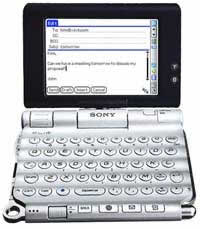 Sony has announced that it is to end production on its Clie line of PDAs in Japan.
Sony has announced that it is to end production on its Clie line of PDAs in Japan. Our guess is that they’re going to focus their energies on ramping up the feature list on Sony Ericsson smartphones, developing the PlayStation Portable and finally producing the iPod killer they so desperately need.
Our guess is that they’re going to focus their energies on ramping up the feature list on Sony Ericsson smartphones, developing the PlayStation Portable and finally producing the iPod killer they so desperately need. Apple has updated its iPod photo line-up with a new slim 30GB model, holding up to 7,500 songs, for just £249 ($475, e360) and a new 60GB model, holding up to 15,000 songs, for £309 ($590, e446)
Apple has updated its iPod photo line-up with a new slim 30GB model, holding up to 7,500 songs, for just £249 ($475, e360) and a new 60GB model, holding up to 15,000 songs, for £309 ($590, e446) The truth is that the iPod photo seems to be far better as a versatile MP3 player and photo presentation unit rather than something for serious photographers to use for direct-to-camera storage.
The truth is that the iPod photo seems to be far better as a versatile MP3 player and photo presentation unit rather than something for serious photographers to use for direct-to-camera storage.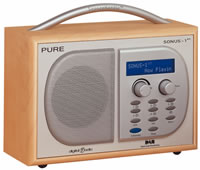 PURE Digital has announced its new PURE SONUS-1XT DAB digital radio, an enhanced alarm radio with unique iVOX voice feedback technology.
PURE Digital has announced its new PURE SONUS-1XT DAB digital radio, an enhanced alarm radio with unique iVOX voice feedback technology.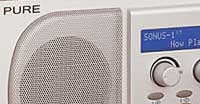 It looks reasonable too, kitted out in smart maple wood casework with a pearlescent white front fronted with a silver grille and control panel with scrolling blue LCD text display.
It looks reasonable too, kitted out in smart maple wood casework with a pearlescent white front fronted with a silver grille and control panel with scrolling blue LCD text display. Digital civil liberties organisation, The Electronic Frontier Foundation (EFF) has announced the next stage in its ongoing challenge to the US Federal Communications Commission’s “Broadcast Flag” technology mandate (
Digital civil liberties organisation, The Electronic Frontier Foundation (EFF) has announced the next stage in its ongoing challenge to the US Federal Communications Commission’s “Broadcast Flag” technology mandate ( JVC have wheeled out a veritable cavalcade of new, full-featured multi-format DVD recorders, including a series of combination units that combine DVD recording with hard disk drive (HDD), VHS and Mini DV recording.
JVC have wheeled out a veritable cavalcade of new, full-featured multi-format DVD recorders, including a series of combination units that combine DVD recording with hard disk drive (HDD), VHS and Mini DV recording.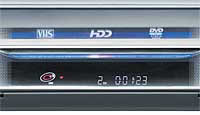 Those with VHS collections chaotically labelled with a load of indecipherable scrawling, may enjoy the auto thumbnail creation feature, which automatically creates video thumbnail chapter references when dubbing to DVD.
Those with VHS collections chaotically labelled with a load of indecipherable scrawling, may enjoy the auto thumbnail creation feature, which automatically creates video thumbnail chapter references when dubbing to DVD. In an increasingly crowded marketplace, heavily dominated by iPod products, rival MP3 manufacturers are constantly foraging around to unearth new Unique Selling Points.
In an increasingly crowded marketplace, heavily dominated by iPod products, rival MP3 manufacturers are constantly foraging around to unearth new Unique Selling Points. SanDisk today introduced the less-than-snappily entitled SanDisk Ultra(TM) II SD(TM) PLUS, an innovative SD flash memory card with built-in USB connectivity.
SanDisk today introduced the less-than-snappily entitled SanDisk Ultra(TM) II SD(TM) PLUS, an innovative SD flash memory card with built-in USB connectivity.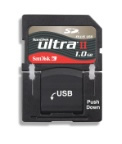 SanDisk expects the card to initially be available in two capacities with the 512MB card having a suggested retail price of $109.99 (£58, €84) and the 1GB version carrying a suggested price of $149.99 (£79, €115)
SanDisk expects the card to initially be available in two capacities with the 512MB card having a suggested retail price of $109.99 (£58, €84) and the 1GB version carrying a suggested price of $149.99 (£79, €115)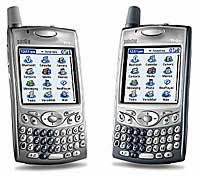 In a move sure to have Palm aficionados blubbering into their PDAs, the European release of the eagerly awaited
In a move sure to have Palm aficionados blubbering into their PDAs, the European release of the eagerly awaited 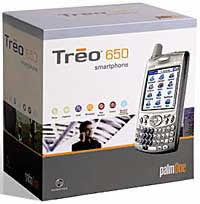 According to PalmOne, the GSM version of the 650 provides up to six hours talk time and 12 days on stand-by.
According to PalmOne, the GSM version of the 650 provides up to six hours talk time and 12 days on stand-by.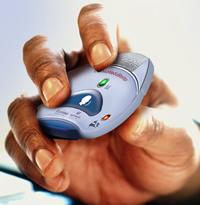 Arbitron Portable People Meter and Eurisko Media Monitor selected for further field testing
Arbitron Portable People Meter and Eurisko Media Monitor selected for further field testing  To make the test as thorough as possible, hundreds of unique listening environments were generated, with RAJAR specifying several criteria which the audiometers should fulfil – these included the ability to identify all formats equally, whether music or speech, against a variety of extraneous background noises, when played at differing volume levels and regardless of whether the wearers were stationary or in motion.
To make the test as thorough as possible, hundreds of unique listening environments were generated, with RAJAR specifying several criteria which the audiometers should fulfil – these included the ability to identify all formats equally, whether music or speech, against a variety of extraneous background noises, when played at differing volume levels and regardless of whether the wearers were stationary or in motion.